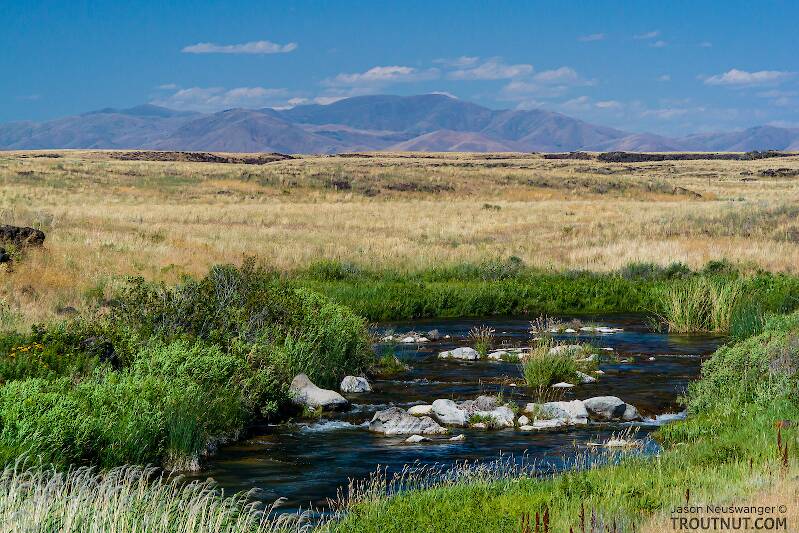
Salmonflies
Pteronarcys californica
The giant Salmonflies of the Western mountains are legendary for their proclivity to elicit consistent dry-fly action and ferocious strikes.


Mayfly Species Siphlonurus columbianus (Gray Drakes)
Where & when
According to Fred Arbona in Mayflies, the Angler, and the Trout, this species is abundant and widespread across the West and as far east as South Dakota. The USGS distribution records do not reflect this, but they are often incomplete.In 3 records from GBIF, adults of this species have been collected during July (67%) and June (33%).
In 3 records from GBIF, this species has been collected at elevations of 2000, 3500, and 5971 ft.
Species Range
Physical description
Most physical descriptions on Troutnut are direct or slightly edited quotes from the original scientific sources describing or updating the species, although there may be errors in copying them to this website. Such descriptions aren't always definitive, because species often turn out to be more variable than the original describers observed. In some cases, only a single specimen was described! However, they are useful starting points.
Male Spinner
Wing length: 13 mm
A large species, much resembling Siphlonurus occidentalis in its general appearance.
Head brown. Thorax deep brown. Mesothoracic scutellum blackish, with a paler ruddy spot directly anterior to it. Pleural sutures and wing bases yellowish. Fore legs deep blackish brown; middle and hind legs light yellowish brown. Femora marked with a slight purplish brown streak before the apex; tarsal joinings also purplish brown. Wings hyaline, with a faint brownish tinge in the stigmatic area. Veins entirely blackish.
Abdomen deep purplish brown dorsally, the pale anterior triangles light yellowish. Ventrally dull yellowish. The broad purplish brown oblique streaks are usually united on the anterior margin to form the blackish U-shaped marks. These are less distinct than in occidentalis, especially on sternites 8 and 9, where they barely join, are diffuse and poorly defined. Two tiny dark dots are usually present near the center of each sternite, within the dark U-mark. Segment 10 is wholly brown. Forceps dark with paler base. Penes as in fig. 122. Tails dark at base, becoming paler distally. Joinings brown.
Start a Discussion of Siphlonurus columbianus
References
- Arbona, Fred Jr. 1989. Mayflies, the Angler, and the Trout. Nick Lyons Books.
- Caucci, Al and Nastasi, Bob. 2004. Hatches II. The Lyons Press.
- Needham, James G., Jay R. Traver, and Yin-Chi Hsu. 1935. The Biology of Mayflies. Comstock Publishing Company, Inc.
Mayfly Species Siphlonurus columbianus (Gray Drakes)
Species Range
Common Names
Resources
- NatureServe
- Integrated Taxonomic Information System
- Global Biodiversity Information Facility
- Described by McDunnough (1925)

